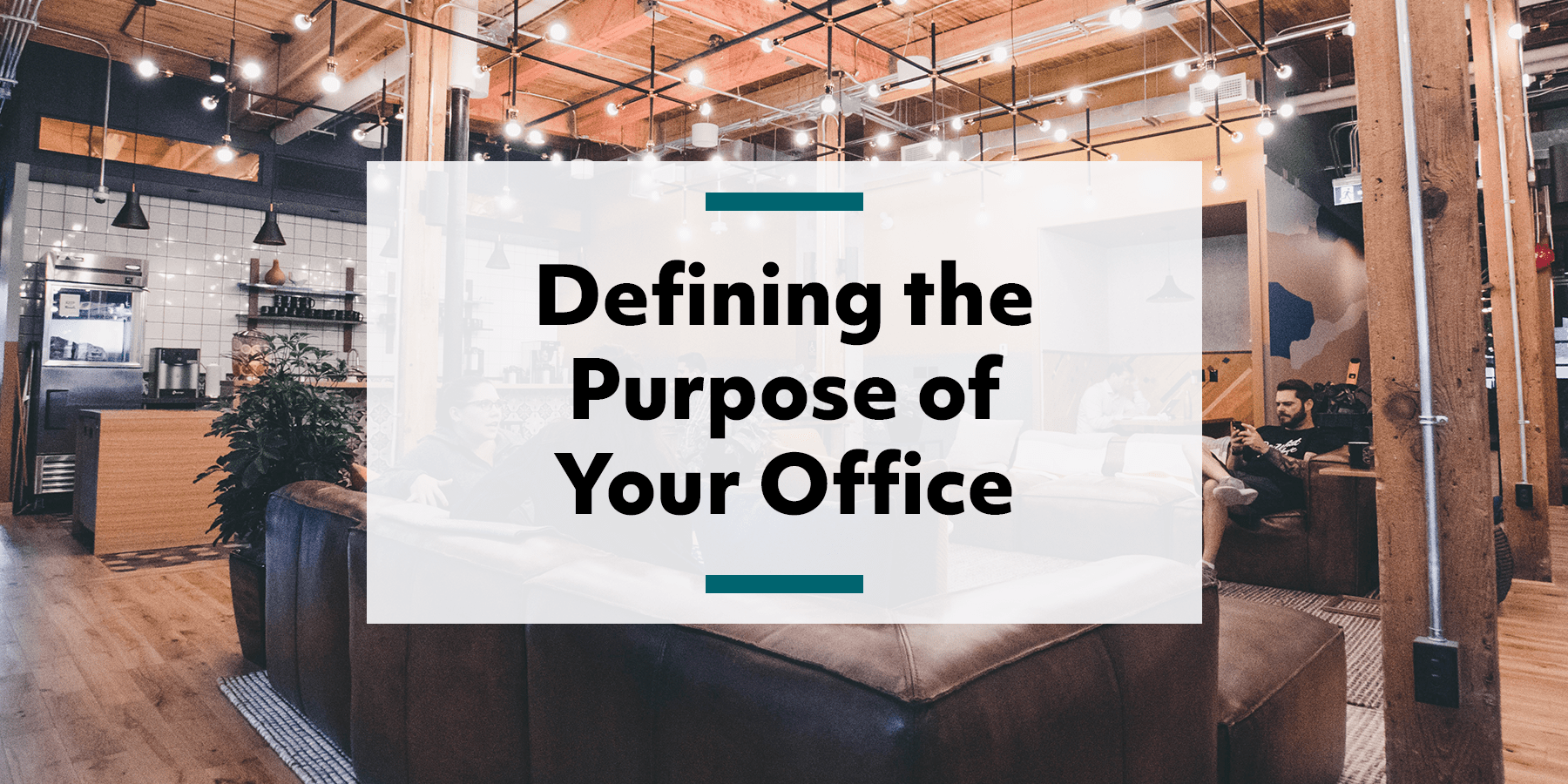We’ve recently been talking about preparing and planning for your employees’ return to the office. With the COVID-19 vaccines rolling out, there’s a light at the end of the lockdown tunnel. Although the full transition back is still a little far out, there are steps you can (and should) take now to jumpstart the process. One of those is defining the main purpose and use of your office space.

You may be thinking, “The purpose of the office is for our employees to work.” And let me tell you, that could not be more correct! But that’s too broad of a mindset. Yes, your employees come to the office to get work done. But what kind of work? And which work could they get done better at home?
Quarantine restrictions have made it clear: Most people can successfully work from home. So if they can work from home and still be productive, then why would they come back to the office every day? Which brings us back to the point of this blog: defining the purpose of your office!
Communication
We aren’t going to sit here and tell you how your employees will interact with your office space when they eventually return, because we simply can’t. That information can only be revealed from communicating and surveying your employees and learning where they are mentally. Honestly, they probably haven’t put too much thought into what it’ll actually be like going back to the office. Totally understandable.
(Side note: I was actually just talking to my manager about how it’s crazy to think we used to all work in an office together. It feels like 100 years ago! So yeah, I’m still stuck in this work-from-home mindset myself. BUT (big but), our leadership team has been openly communicating with us on a weekly basis in regards to office etiquette now and the state of our eventual return.)
So in order to get a good grasp on how your workforce will work in the office again, talk to them. To offer a vague starting point, here’s what professionals surveyed by JLL said they missed most about working in the office:
- Collaborating informally with other people
- Socializing with colleagues
- Supporting the work of others
That means employees want to return to work with each other, not once again be confined to their desk. They want space to collaborate and interact with each other. So just keep that in mind when you’re working on your return-to-the-office plan.
Collaboration
An estimated 25-30% of the workforce will be working at home on a multiple-days-a-week basis by the end of 2021, according to Global Workplace Analytics. Let’s say your organization aheres to that statistic, for the sake of argument. That means a significant area of your office space will be vacant several days per week.
During the three to four days per week your employees do come in, they want to interact with their coworkers. So you need to design or redesign your office space to be conducive to collaboration. You can swap employee desks with smaller tables for spontaneous meetings. You can also build more rooms – even with temporary walls – so employees aren’t fighting to find a space to host their meetings. We suggest you look into a hybrid office design for inspiration.
A hybrid office is a workspace that is built for collaboration and casual work habits. Like we mentioned earlier, the days your employees come into the office will be days for them to meet with each other, not time dedicated to individual work. While your employees will need to get work done in the office, they may not need their own personal desk. Cafe-style tables or lounge areas could prove to be perfect places to get work done or prepare for upcoming meetings.
Then the days your employees work from home will most likely be days dedicated to individually focused work. We’re not saying Zoom meetings are going to disappear, we’re just saying your employees won’t schedule as many meetings on the days they aren’t in the office.
Supplies and storage
This also means providing your employees with the tools they need to work and meet effectively when they are in the office. If employees no longer have a personal workspace, they need a place to store their belongings, and access to office supplies. We recently heard from a company on a webinar that has office supply hubs stocked with pens, pencils, notepads, as well as cleaning supplies, located in areas around the office.
They also touched on in-office lockers and individual storage areas for employees to keep their stuff during the day. This just helps employees feel comfortable in the office, without worrying where they will keep their things during the day.
Commuting
You know we couldn’t write a blog without touching on commuting. But when you’re defining the purpose and use of your office space, your employee commutes will matter. If a large portion of your workforce decides they want to be in the office regularly for in-person collaboration, you will want to avoid them driving alone.
But if your employees say they don’t plan to come in regularly and the main purpose of your office is centered around large meetings, you will need to think about possibly increasing your parking spaces. Obviously we encourage more sustainable commuting methods, but if employees are only coming in two or three times a month, driving may be the most logical option.
Confirming your return-to-the-office commute management strategy will only be possible after you talk to your employees, understand their return plans, and then decide what direction to move with the purpose of your office. If you’re concerned or confused about where to begin, fear not! We have recently released our return-to-the-office toolkit. The toolkit comes with a customizable timeline based on your company needs, a comprehensive checklist of what you need to accomplish, and email templates to communicate with your employees. You can download it here!




